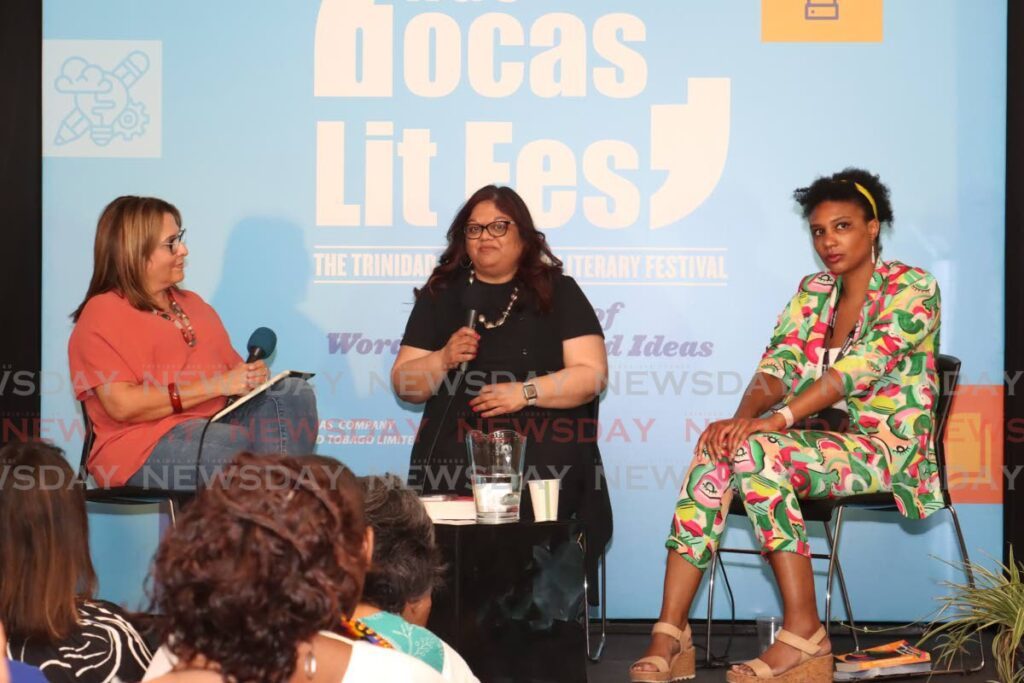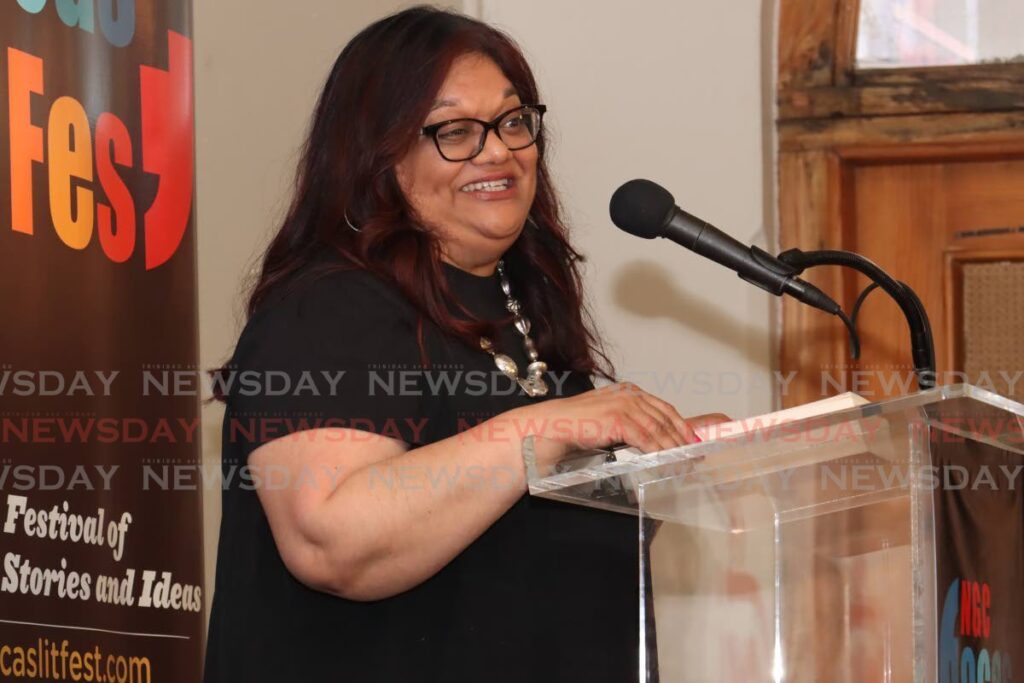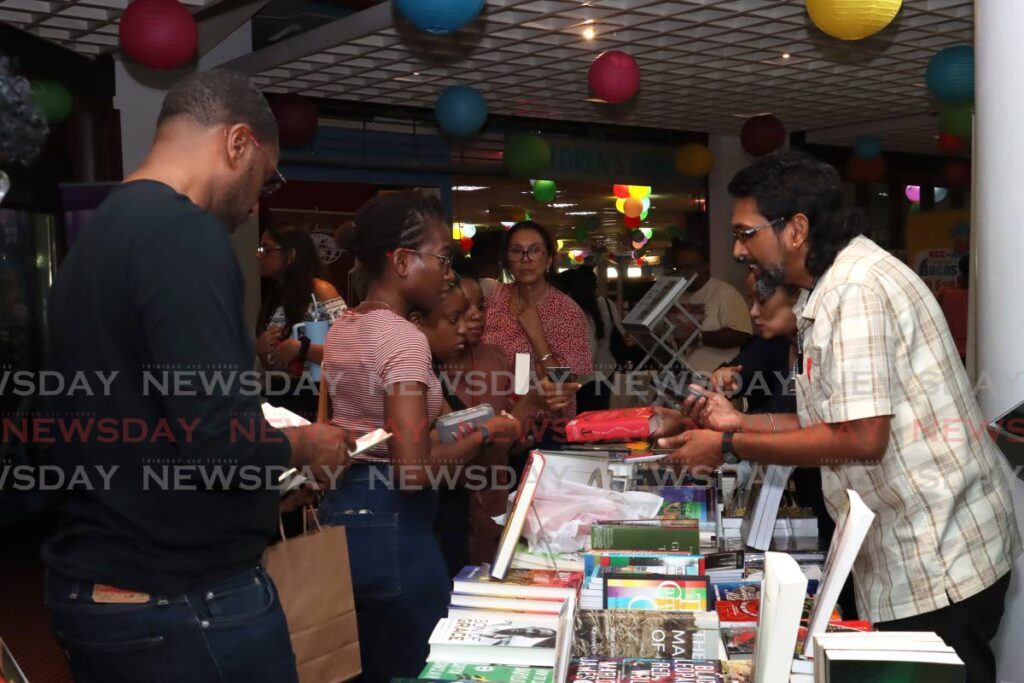Ingrid Persaud shows love to Boysie Singh's women

Ingrid Persaud’s new book, The Lost Love Songs of Boysie Singh, is a love song to the women who fell in love with the charismatic gangster, arsonist and mass murderer who was known as “The Rajah” in 1940s and 1950s Trinidad.
The story follows the lives of Singh’s childhood friend Rosie; his lover, the sex worker Popo; his child mother Mana Lala; and his wife Doris. Written in alternating voices, the women speak of their feelings for Singh, his treatment of them and his perceived treatment of the others, and his exploits as reported to them or as they see them.
The book was launched in London on April 25, followed by the Caribbean launch on April 27 at the NGC Bocas Lit Fest.

Speaking during a Take Two panel at the festival, which was standing room only, Persaud said the women were one-liners in Boysie’s history.
“So Popo, all you hear about in the Bickerton book is two sentences – 'He lived with Popo, she looked after his son Chunksee, his only child. And he tried to kill her.' That’s not a spoiler from a mass murderer, he tried to kill her, in a rather gruesome way. So from that little bit, I have to extract the life of a woman, because she’s written out of history and that’s all we know.
“So rather than talk about how Boysie might love, I was much more interested in these women who were in his life, how they loved and what they gave to it, in spite of him. What I was interested in was to bring the lives of the women who were erased from history to the forefront.”
Persaud skillfully weaves the products of her research into 1940s and 50s Trinidad into her book, using interviews with his remaining family, his neighbours, her family from Cedros, newspaper accounts, the book The Murders of Boysie Singh by Derek Bickerton, and songs sung at the time as some of her research resources to build a picture of the times. She said the records of Singh’s three murder trials were destroyed in the Red House fire.
Speaking to Sunday Newsday following the panel, she said, “The women were mentioned in passing, they weren’t major figures in any reporting of the story of Boysie, but I thought that there had to be far more behind it. Mana Lala, the baby mother, for example, there’s a photograph of her, she was the only woman in his life who was there when he was executed in 1957. So what’s the story someone who endures throughout his life?
“We know that in his prison notes, he writes about his wife Doris, being somebody who attempted to show him a different path that he didn’t take, and so I thought there’s a richness here that hasn’t been captured, and that’s what I wanted to do.
“John Boysie Singh knew how to love himself, and it is in the voices of the women who all loved him in particular ways, you see him unable to respond, or simply taking.”

To TT audiences, the women are readily identifiable, recognisable and distinct. Doris is the Toco “reds”, staunchly Catholic, determined to see her husband rise on the social ladder. Popo is the sex worker and lover who helps Singh get his start in the gambling business, but is bound to him through money and fear. Rosie is the childhood friend turned bar owner, who pays protection to Singh and is threatened by him. Mana Lala is the Indian child mother, who pines for marriage and never leaves the house without her orhni, often willing to go to frightening lengths for Singh to pay attention to her.
Persaud said apart from Rosie, there was some basis for the characters in such history as does exist, although this was contestable.
“I really tried to imagine their lives and imagine the details of their lives, so it’s in the details that I tried to flesh out the characters, particularly in their language. I used the differences in their speech and in their vocabulary to differentiate them. They feel very distinct in my mind.”
Persaud said she made a choice in how to have the women interact that might be different if they existed in modern times.
“This is fiction and one has to work within the expectations of fiction. Within those expectations you create a story and that’s the story and the arc I chose.
“But I think your question points to a slightly different point, which is that women today would make different choices. There’s so much more female empowerment, and so much more community among women now, that it would have been easy to transpose those things to the time. And I was very careful that the choices that those characters should be consistent with who they were and the time they lived in, and their circumstances, and I didn’t feel it would ring true to have them make choices or have community that would not have existed at the time.”
She said she did not want Boysie to be given a voice in her book, but to be seen through the eyes of the women.
“There’s no point at which Boysie becomes a hero. I certainly didn’t want to give him a gangster glamour. He exists on the page but is always filtered through the eyes of others. We really only learn about people through the eyes of others, so I thought that was as effective a way as any.
“Boysie might be the conduit on which a great story is told, but I’m much more interested in uncovering the lives of the women who I think were representing all of us women in the audience at some point in our lives, and I think those voices are the ones I’m concerned about. And if I feel accountable to anything, it is an accountability to do them justice."
Asked to what extent Singh was a product of the environment he was born into in the novel, Persaud said,
“One interpretation could be that Boysie was a product of his time and of poverty, and being an Indian in town that isolated him from his community.
“But I don’t write like that, and I don’t make those assumptions. We don’t own corruption, we don’t own piracy, and mass murdering, etc. These have been happening from time immemorial, it’s part of the human condition, we don’t own it and to write with the weight of political representation would be to create very stick-figure type characters, rather than nuanced characters – people who are motivated by many things at many times. In that sense, it’s not not political.”
In an interview with Newsday in May 2021, Persaud said Singh was a womaniser, gambling king, arsonist, preacher, pirate, thief, human trafficker, gangster, smuggler and mass murderer. He was hanged in 1956, at age 47, for the murder of dancer Thelma Haynes.


Comments
"Ingrid Persaud shows love to Boysie Singh’s women"